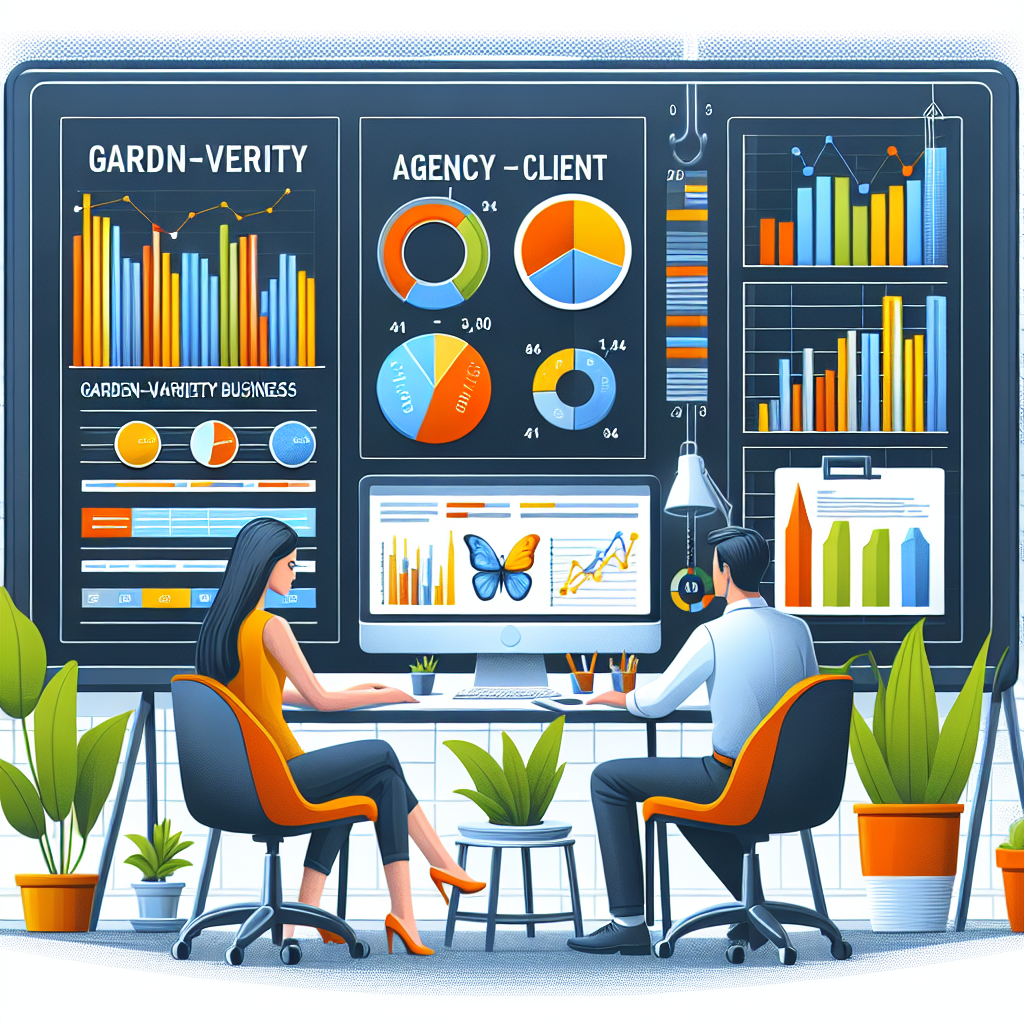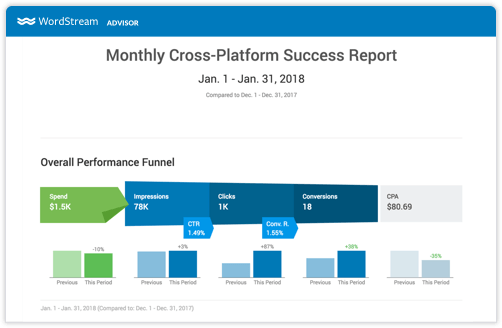Unlock the secrets to creating a powerful agency-client report that will revolutionize transparency and drive performance to new heights.

Image courtesy of via DALL-E 3
Table of Contents
- Introduction: What is an Agency-Client Report?
- Understanding Key Components
- How to Create an Effective Report
- Best Practices for Enhancing Transparency
- Tools and Software to Use
- Common Pitfalls and How to Avoid Them
- Real-World Examples
- Wrapping It Up: Summary and Next Steps
- Frequently Asked Questions (FAQs)
Introduction: What is an Agency-Client Report?
When businesses work together with agencies to achieve their goals, it’s essential to have a clear understanding of the progress and results. This is where an agency-client report comes into play. An agency-client report is a document that outlines the performance and transparency between the agency and the client. It provides insights into the strategies implemented, the results achieved, and areas for improvement.
Purpose
Businesses use agency-client reports to track their progress, understand the value they are receiving from the agency, and make informed decisions based on data. These reports also help in setting realistic goals, measuring success against predefined objectives, and ensuring accountability on both ends.
Importance
Transparency is the key to a successful agency-client relationship. By sharing detailed reports, both parties can foster trust, identify areas for improvement, and make data-driven decisions. These reports also play a crucial role in enhancing performance by highlighting what is working well and what needs adjustment.
Understanding Key Components
An executive summary is a brief overview of the main points and findings of the agency-client report. It should include a summary of the goals, objectives, key performance metrics, and recommendations. The executive summary serves as a snapshot of the entire report, providing busy executives with a quick understanding of the key takeaways.
Goals and Objectives
Setting clear goals and objectives is crucial in an agency-client report. These goals outline what the client wants to achieve, while objectives break down how those goals will be met. By clearly defining goals and objectives, both parties can align their efforts and ensure that the report focuses on relevant areas.
Performance Metrics
Performance metrics are the measures used to evaluate the success of a campaign or project. These could include metrics like website traffic, conversion rates, click-through rates, and more. By tracking these metrics, agencies can demonstrate the impact of their work and help clients understand the outcomes of their investments.
Recommendations
Recommendations are the actionable steps suggested by the agency to improve performance based on the report’s findings. These recommendations may involve changes to strategies, campaigns, or processes. By providing clear and practical recommendations, agencies can help clients make informed decisions to enhance their performance.
How to Create an Effective Report
When creating an agency-client report, the first step is planning. Planning is essential because it helps you outline what needs to be included in the report, set clear goals, and establish a timeline for completion. Start by identifying the key objectives of the report and what insights you aim to provide to your clients.

Image courtesy of socialbee.com via Google Images
Gathering Data
After planning, it’s crucial to gather accurate and relevant data for your report. This data could include performance metrics, analytics, customer feedback, and any other information that helps showcase the results of your work. Make sure to collect data from reliable sources to ensure the credibility of your report.
Analyzing Data
Once you have collected the necessary data, the next step is to analyze it. Analyzing data involves identifying trends, patterns, and insights that can help you draw meaningful conclusions. Use data analysis tools and techniques to interpret the information and support your findings in the report.
Drafting the Report
Finally, it’s time to compile all the planned and analyzed data into a coherent report. Start by creating an outline that organizes the information logically, such as an executive summary, goals and objectives, performance metrics, and recommendations. Write clearly and concisely, using visuals like charts or graphs to enhance understanding.
Best Practices for Enhancing Transparency
Transparency is crucial in any business relationship, including the one between agencies and clients. By being transparent in your reporting, you build trust and facilitate better communication. Here are some best practices to enhance transparency in your agency-client reports:
Open Communication
Open communication is the foundation of transparency. It’s essential to keep the lines of communication open at all times. Encourage clients to ask questions and provide updates regularly. By fostering an environment of open communication, you can address any issues or concerns promptly.
Detailed Reporting
When creating your reports, be detailed and honest. Include all relevant information, even if it may not be what the client wants to hear. Transparency involves presenting the data accurately, even if it’s not always positive. Clients will appreciate your honesty and thoroughness.
Consistent Updates
Consistency is key when it comes to transparency. It’s important to provide consistent updates on the progress of the project. Whether it’s a weekly update or a monthly report, maintaining a regular schedule of updates helps keep clients informed and engaged.
Feedback Mechanisms
Feedback is essential for improving transparency in your agency-client relationship. Encourage clients to provide feedback on the reports you provide. By incorporating client feedback, you can tailor your reporting to better meet their needs and expectations. Feedback mechanisms also show clients that their opinions are valued.
Tools and Software to Use
When creating an agency-client report, it’s essential to have the right tools and software at your disposal to streamline the process and ensure accuracy. Here are some of the key tools and software that can help you create effective agency-client reports:

Image courtesy of www.wordstream.com via Google Images
Data Collection Tools
Data collection tools are crucial for gathering accurate and relevant information to include in your reports. Tools like Google Analytics, SurveyMonkey, and SEMrush can help you collect data on website performance, customer feedback, and digital marketing campaigns.
Analytical Software
Analytical software plays a vital role in analyzing the data you’ve collected and deriving meaningful insights. Programs such as Tableau, Google Data Studio, and Microsoft Power BI can help you visualize and interpret data to make informed decisions and recommendations.
Reporting Tools
Reporting tools are indispensable for compiling and organizing the information in your agency-client reports. Tools like Canva, Microsoft PowerPoint, and Google Docs provide templates and features to create visually appealing and comprehensive reports for your clients.
Communication Platforms
Communication platforms are essential for fostering collaboration and maintaining transparency throughout the reporting process. Platforms like Slack, Microsoft Teams, and Asana enable seamless communication, file sharing, and task management among team members and clients.
Common Pitfalls and How to Avoid Them
One common pitfall in creating agency-client reports is a lack of clarity. It’s essential to ensure that your reports are clear and easy to understand for all parties involved. To avoid this pitfall, use simple language, avoid jargon, and provide explanations for any technical terms used. Additionally, include visual aids like charts or graphs to help illustrate key points.
Inaccurate Data
Using inaccurate data can severely impact the credibility of your agency-client report. To prevent this pitfall, double-check your data sources and verify the accuracy of the information you’re using. If there are any discrepancies, address them before finalizing the report. It’s better to spend extra time ensuring the accuracy of your data than to present incorrect information.
Ignoring Feedback
Feedback from your clients is crucial for improving your agency-client reports. Ignoring feedback can lead to missed opportunities for growth and improvement. Make sure to actively listen to your clients’ suggestions and incorporate them into your reporting process. By valuing and acting on feedback, you can strengthen your client relationships and enhance the quality of your reports.
Inconsistent Reporting
Inconsistency in reporting can create confusion and undermine the effectiveness of your agency-client reports. To avoid this pitfall, develop a standardized reporting format and stick to it consistently. Make sure to include the same sections in each report and present information in a logical order. By maintaining consistency in your reporting practices, you can ensure that your clients receive clear and reliable updates on their performance metrics.
Real-World Examples
One successful example of an agency-client report involved a digital marketing agency working with a small business owner. The agency began by clearly outlining the goals and objectives for the client’s social media campaign. They provided an executive summary highlighting key performance metrics such as increased website traffic and engagement rates. By using analytical software, the agency was able to track progress accurately and make data-driven recommendations for future improvements.

Image courtesy of www.saturnone.io via Google Images
Case Study 2
In another instance, a design agency collaborated with a nonprofit organization to create a website redesign report. The agency started by setting clear objectives for the project and conducting thorough research on user experience metrics. They utilized data collection tools to gather feedback from website users and analyzed the data to identify areas for enhancement. The agency provided detailed reporting on website performance and offered recommendations for optimizing the site’s functionality and user engagement.
Learning from Examples
These examples demonstrate the importance of setting clear goals, utilizing performance metrics, and providing detailed recommendations in agency-client reports. By learning from successful case studies like these, businesses can improve transparency, communication, and overall performance in their collaborations. Effective reporting practices not only benefit the client but also foster stronger relationships between agencies and their clients.
Wrapping It Up: Summary and Next Steps
In this ultimate guide to an agency-client report, we have explored the importance of transparency and performance in business relationships. Agency-client reports play a crucial role in fostering trust, understanding, and accountability between parties. By creating detailed reports that focus on key components such as executive summaries, goals, performance metrics, and recommendations, businesses can enhance their communication and decision-making processes.
Remember, open communication, detailed reporting, consistent updates, and feedback mechanisms are essential for maintaining transparency and building successful partnerships. Using the right tools and software can streamline the report creation process and ensure accuracy in data collection and analysis. Additionally, by learning from real-world examples and avoiding common pitfalls, businesses can improve their reporting practices and achieve better results.
Action Plan
For businesses looking to boost transparency and performance through agency-client reports, here is a simple action plan to follow:
- Define clear goals and objectives for the report.
- Plan the report structure and data collection process.
- Gather relevant data and analyze it accurately.
- Compile the report, focusing on key components and recommendations.
- Utilize tools and software for efficient report creation and communication.
- Maintain open communication, provide consistent updates, and incorporate feedback for improvement.
- Learn from successful examples and avoid common pitfalls in reporting.
Want to turn these SEO insights into real results? Seorocket is an all-in-one AI SEO solution that uses the power of AI to analyze your competition and craft high-ranking content.
Seorocket offers a suite of powerful tools, including a Keyword Researcher to find the most profitable keywords, an AI Writer to generate unique and Google-friendly content, and an Automatic Publisher to schedule and publish your content directly to your website. Plus, you’ll get real-time performance tracking so you can see exactly what’s working and make adjustments as needed.
Stop just reading about SEO – take action with Seorocket and skyrocket your search rankings today. Sign up for a free trial and see the difference Seorocket can make for your website!
Frequently Asked Questions (FAQs)
Why Are Agency-Client Reports Necessary?
Agency-client reports are essential as they provide a detailed overview of the work done, the progress made, and the results achieved. These reports help in fostering transparency between the agency and the client by showcasing the efforts put in and the outcomes delivered. They also serve as a tool for accountability and a reference point for future strategies and decision-making.
How Often Should We Create These Reports?
The frequency of creating agency-client reports largely depends on the nature of the project and the agreement between the agency and the client. Generally, it is recommended to create these reports on a regular basis, such as monthly or quarterly, to ensure timely updates on progress and performance. However, the ideal frequency should be determined based on the project’s timeline and goals.
What If the Data is Not Positive?
Handling less favorable data in agency-client reports is a common challenge. In such situations, it is important to communicate honestly and transparently with the client. Acknowledge the setbacks, analyze the reasons behind the negative data, and propose actionable solutions for improvement. It’s crucial to view this as an opportunity for growth and collaboration rather than a setback.
What Tools Are Best for Beginners?
For beginners in creating agency-client reports, it is recommended to start with user-friendly tools that offer essential features for data collection, analysis, and reporting. Some beginner-friendly tools include Google Analytics for data collection, Microsoft Excel for data analysis, Tableau for visualizing data, and Canva for creating visually appealing reports. These tools provide a solid foundation for beginners to kickstart their reporting journey.







